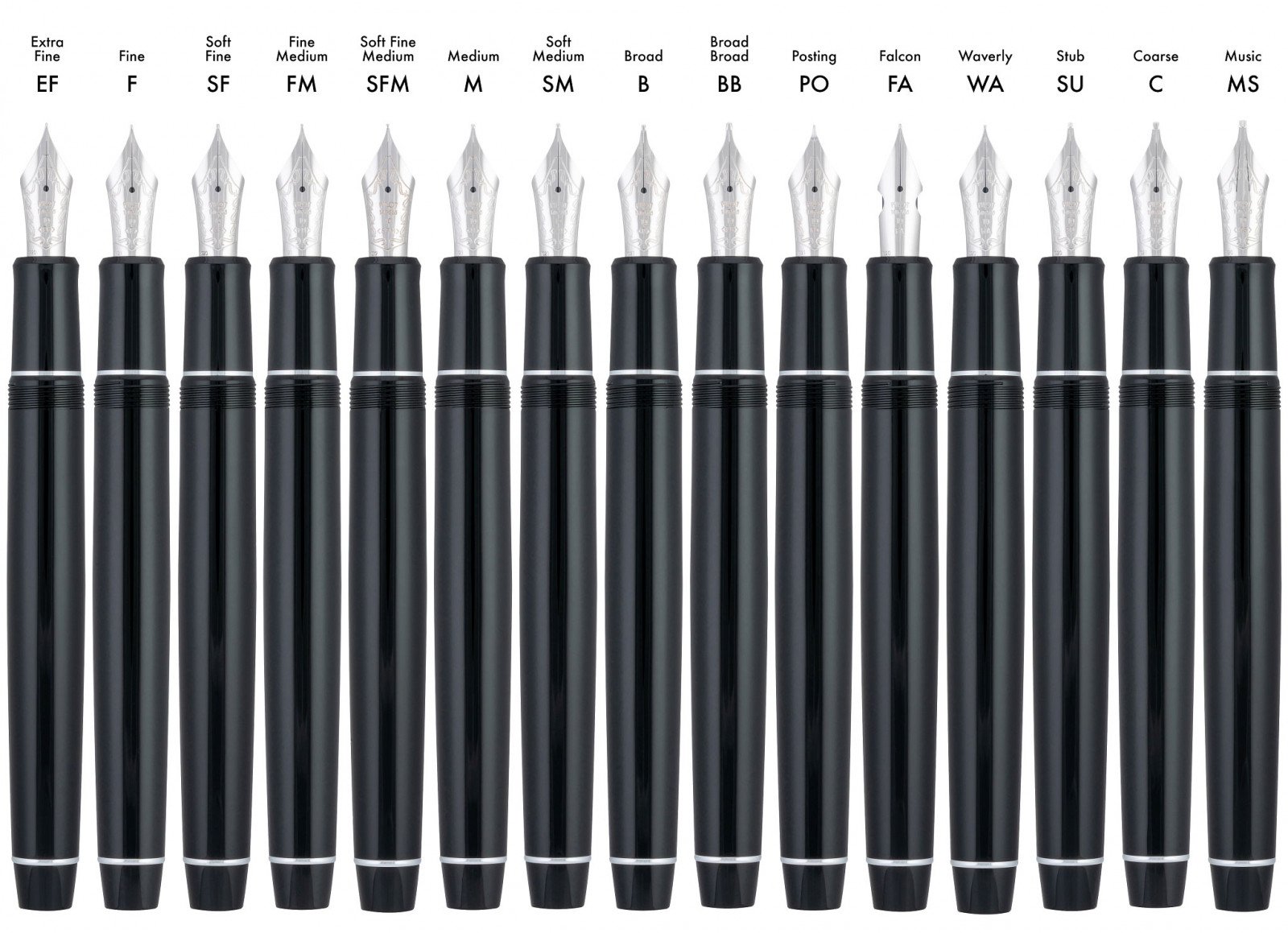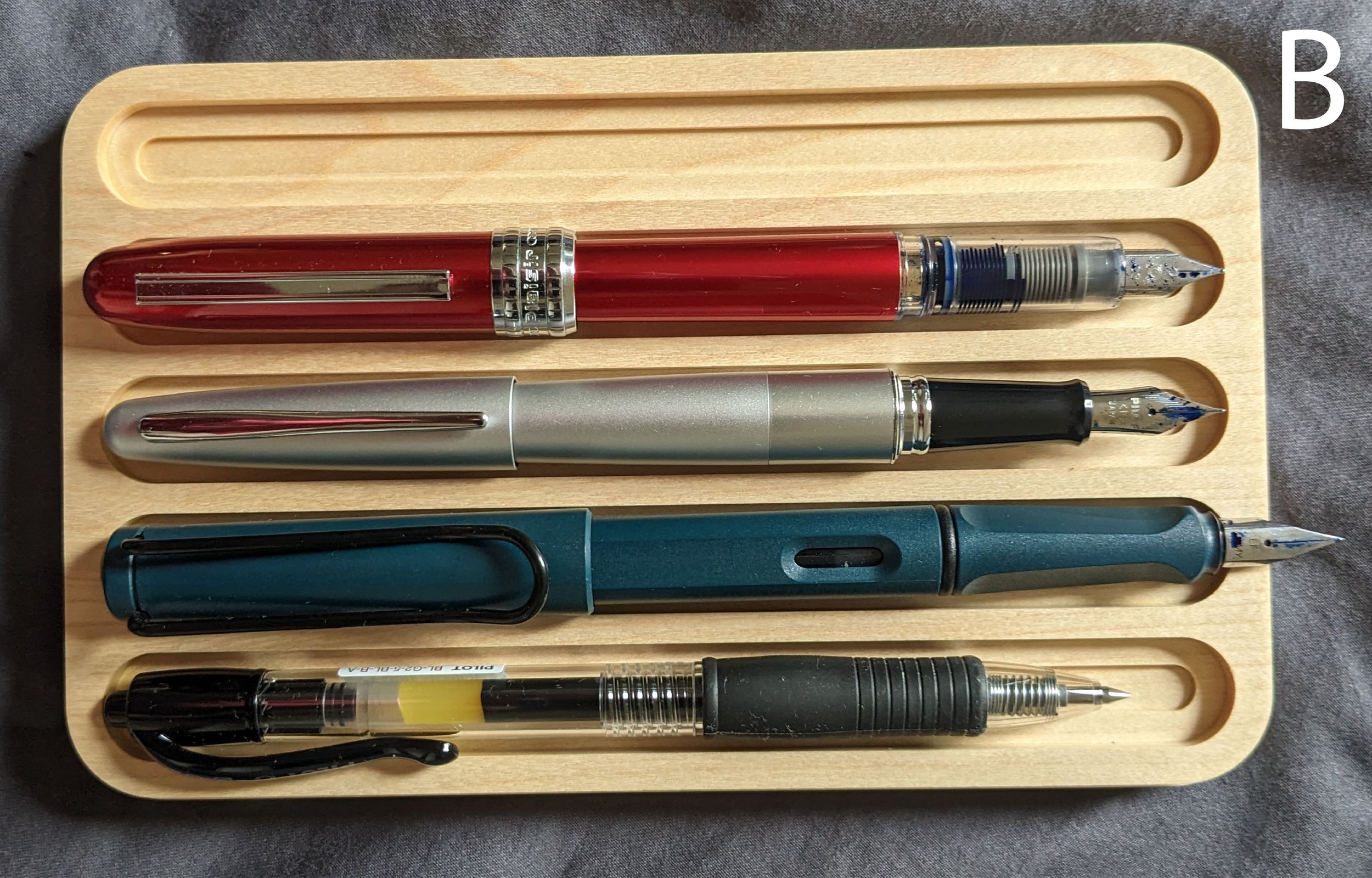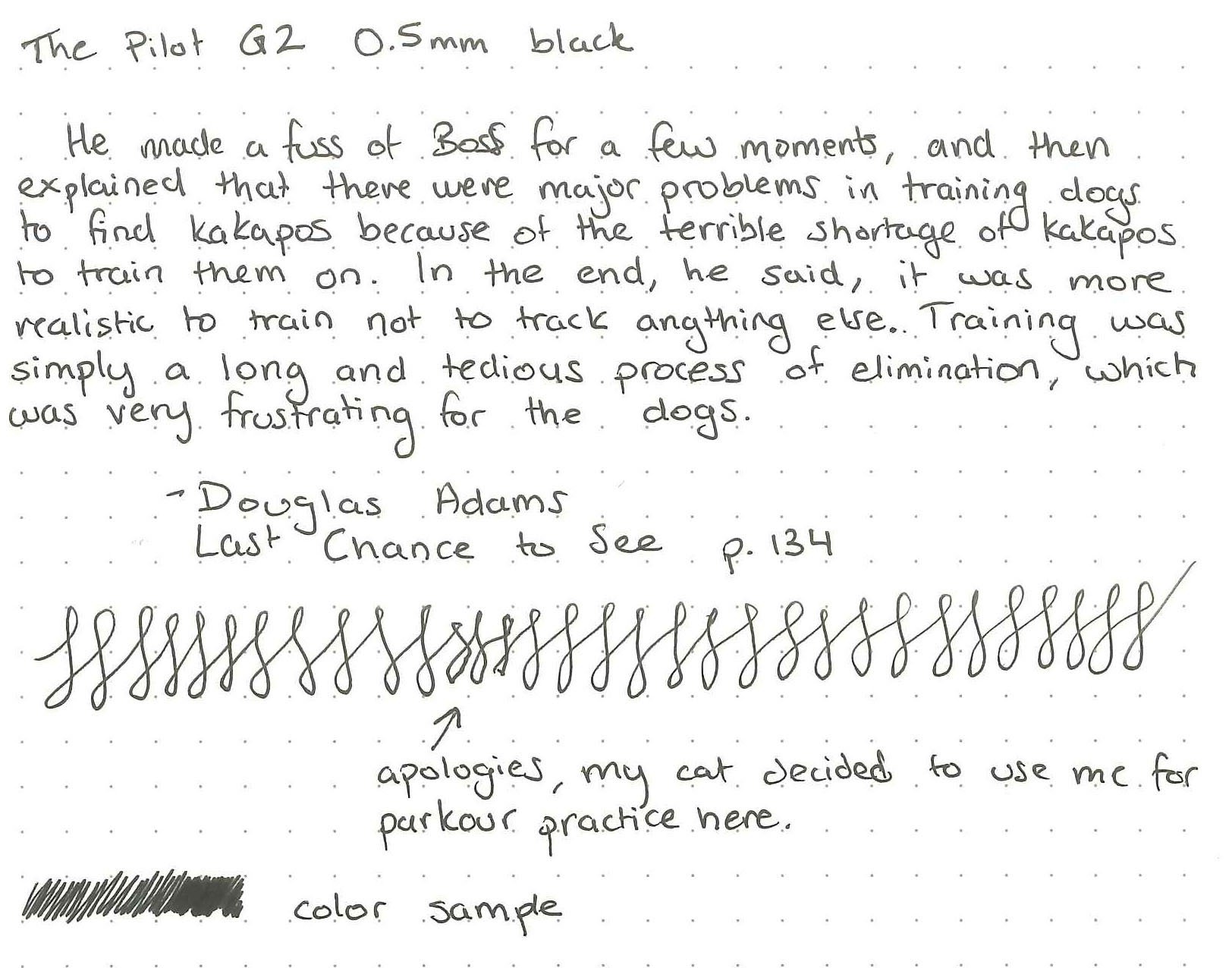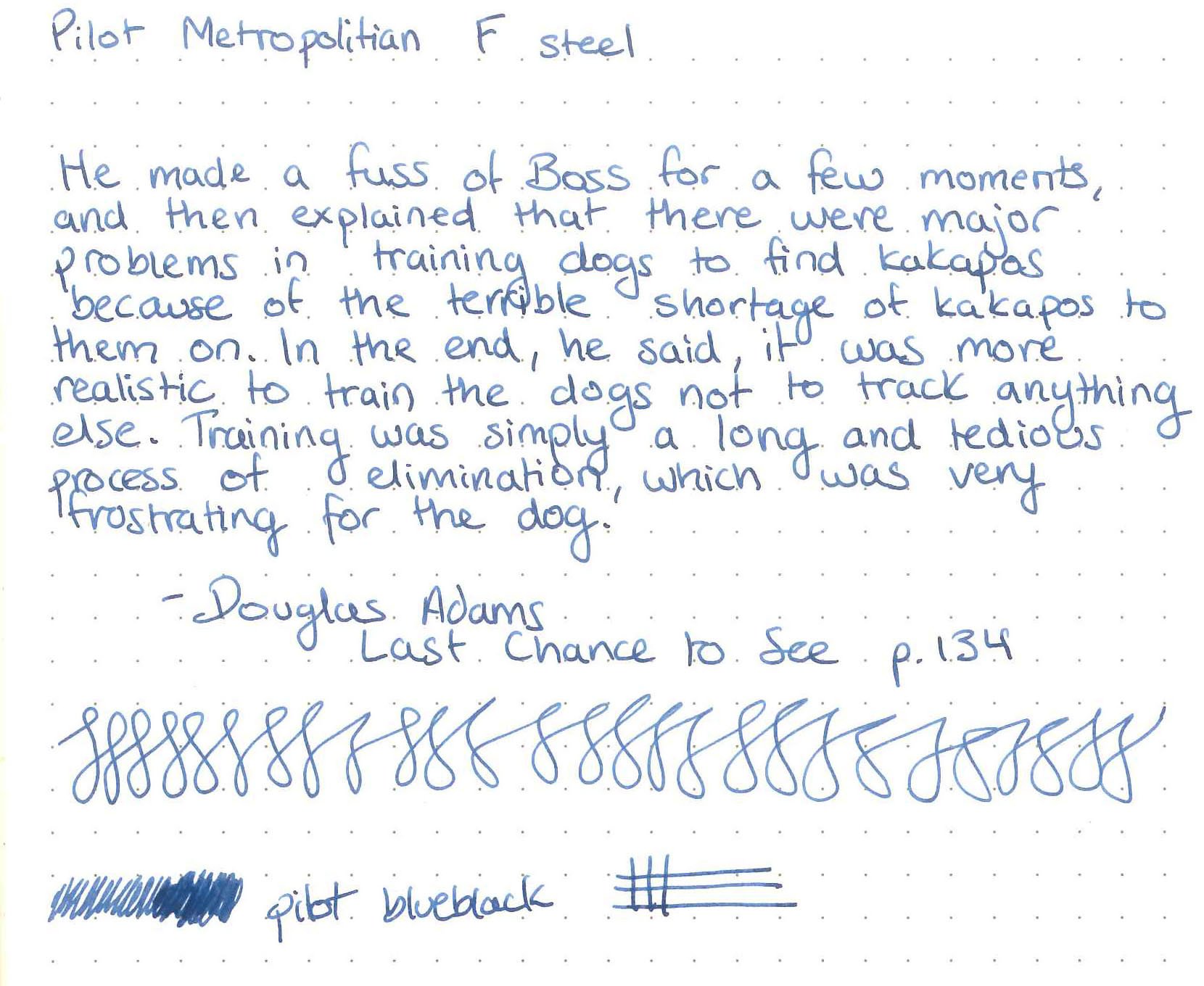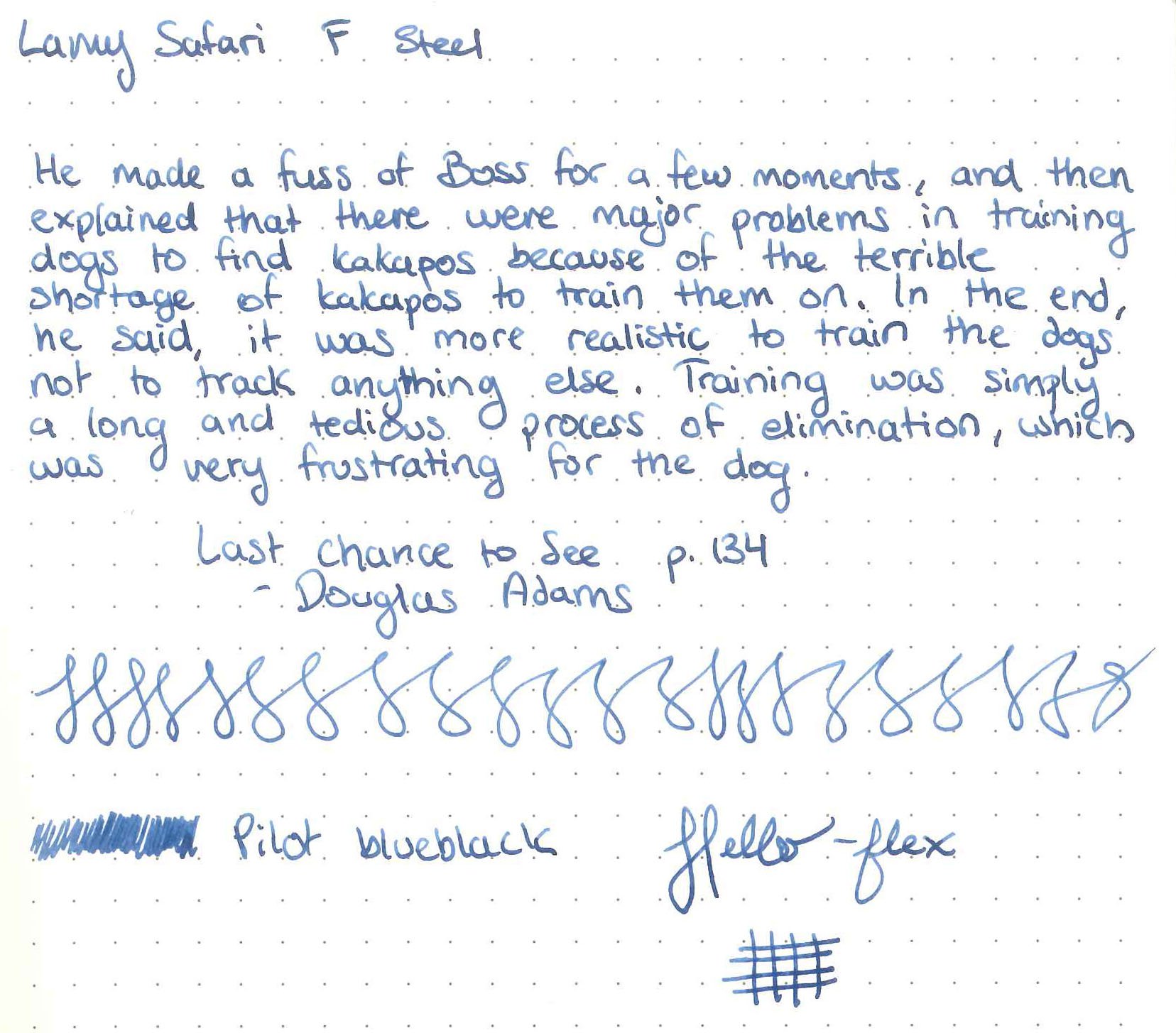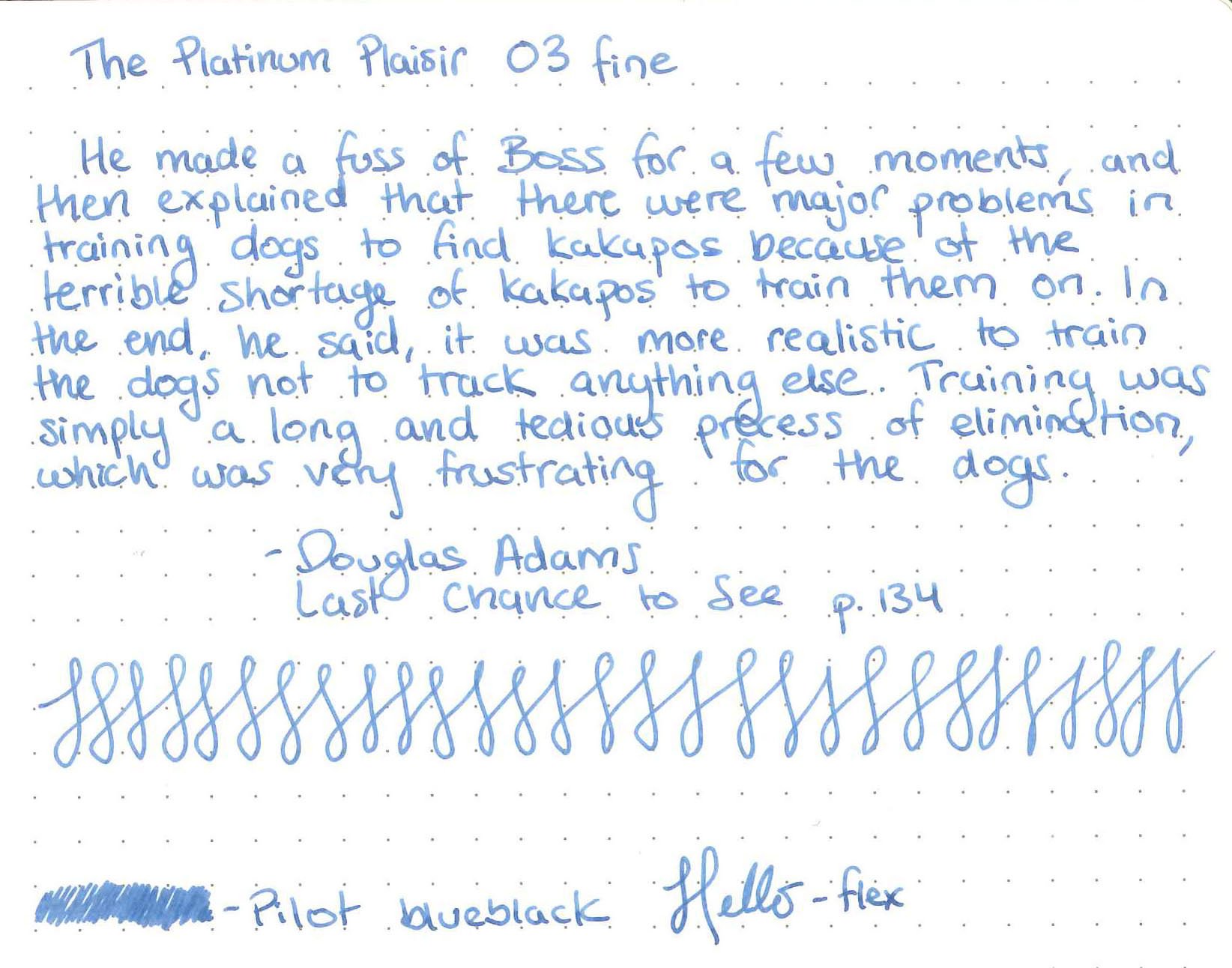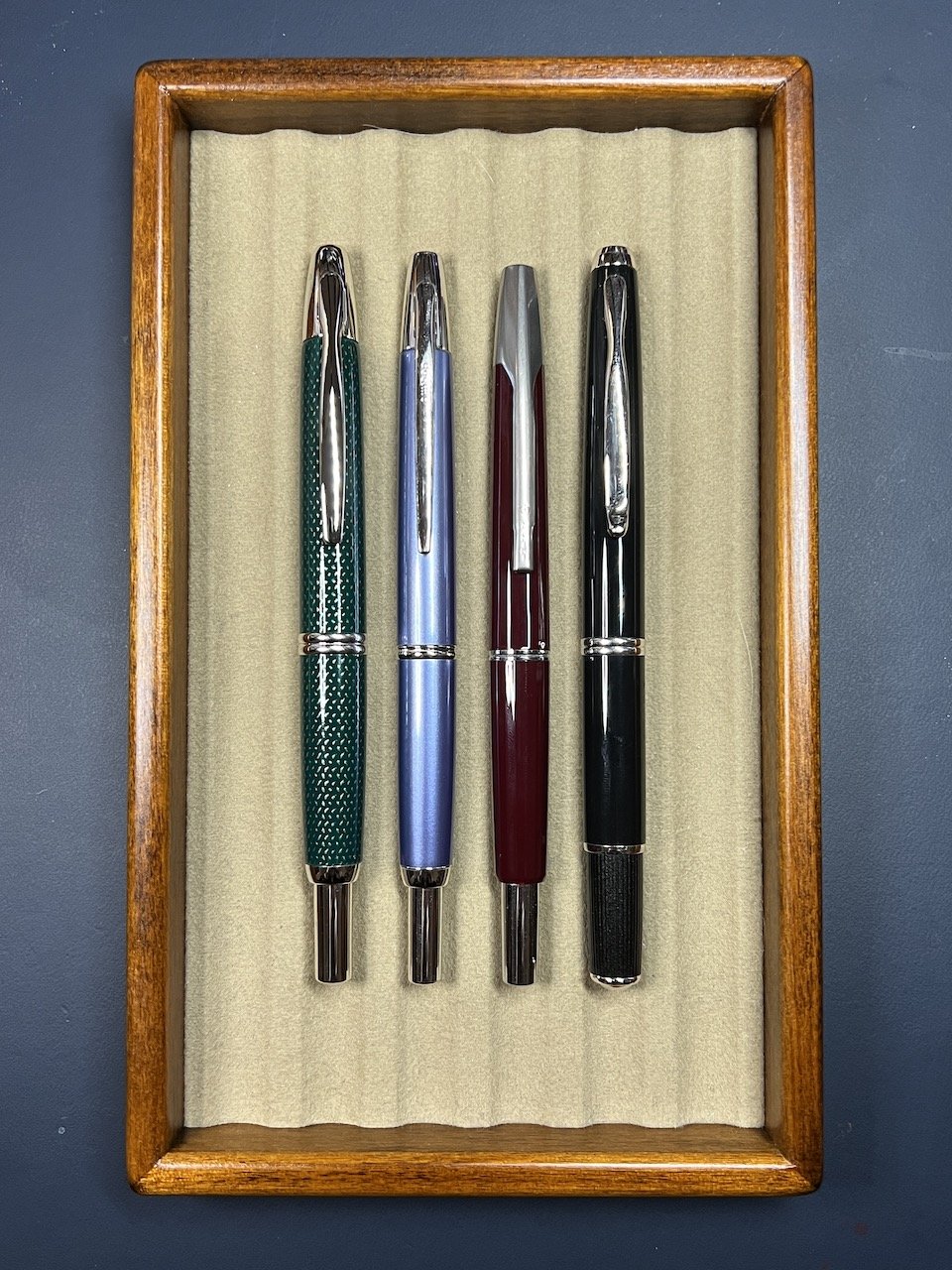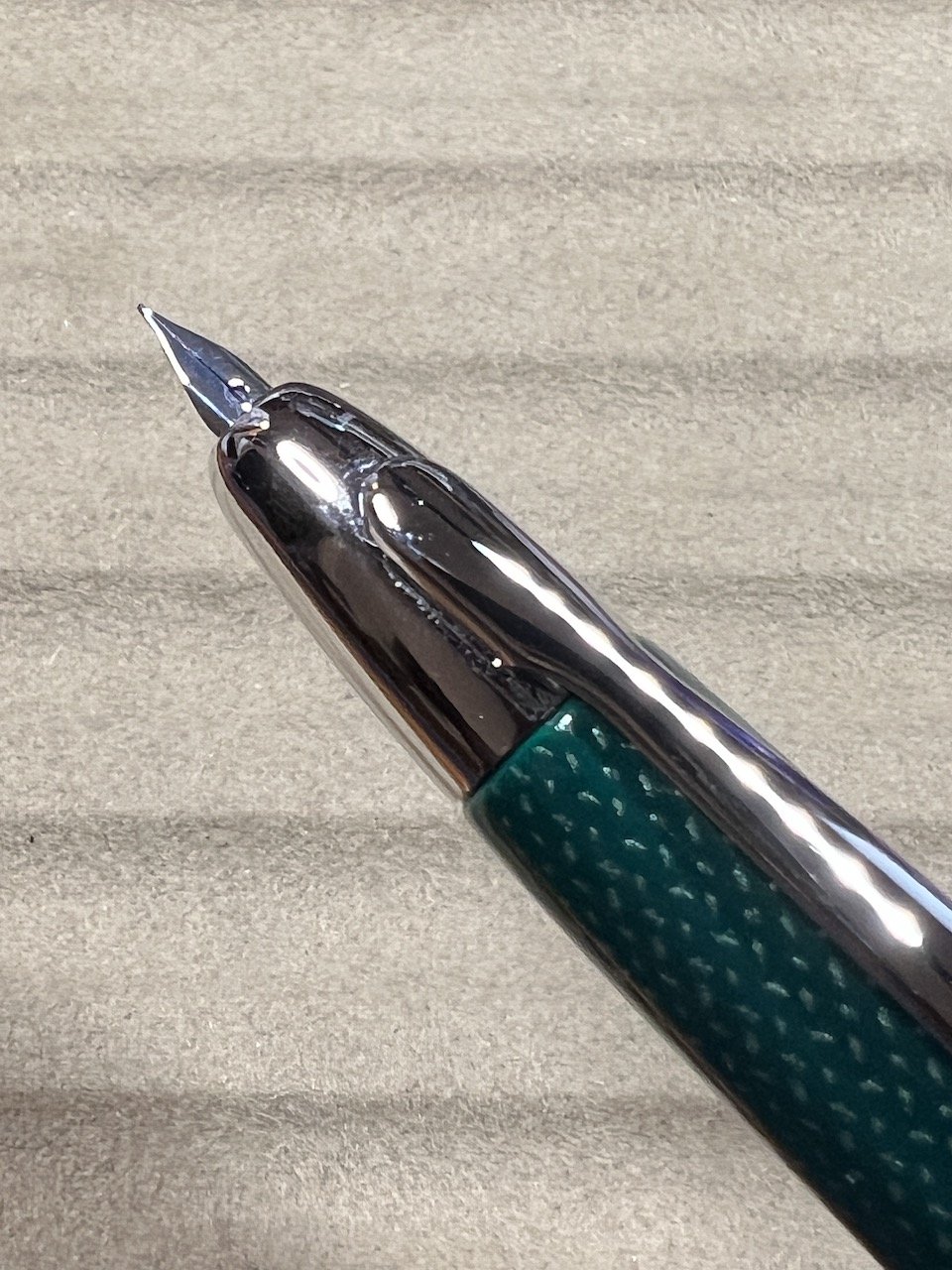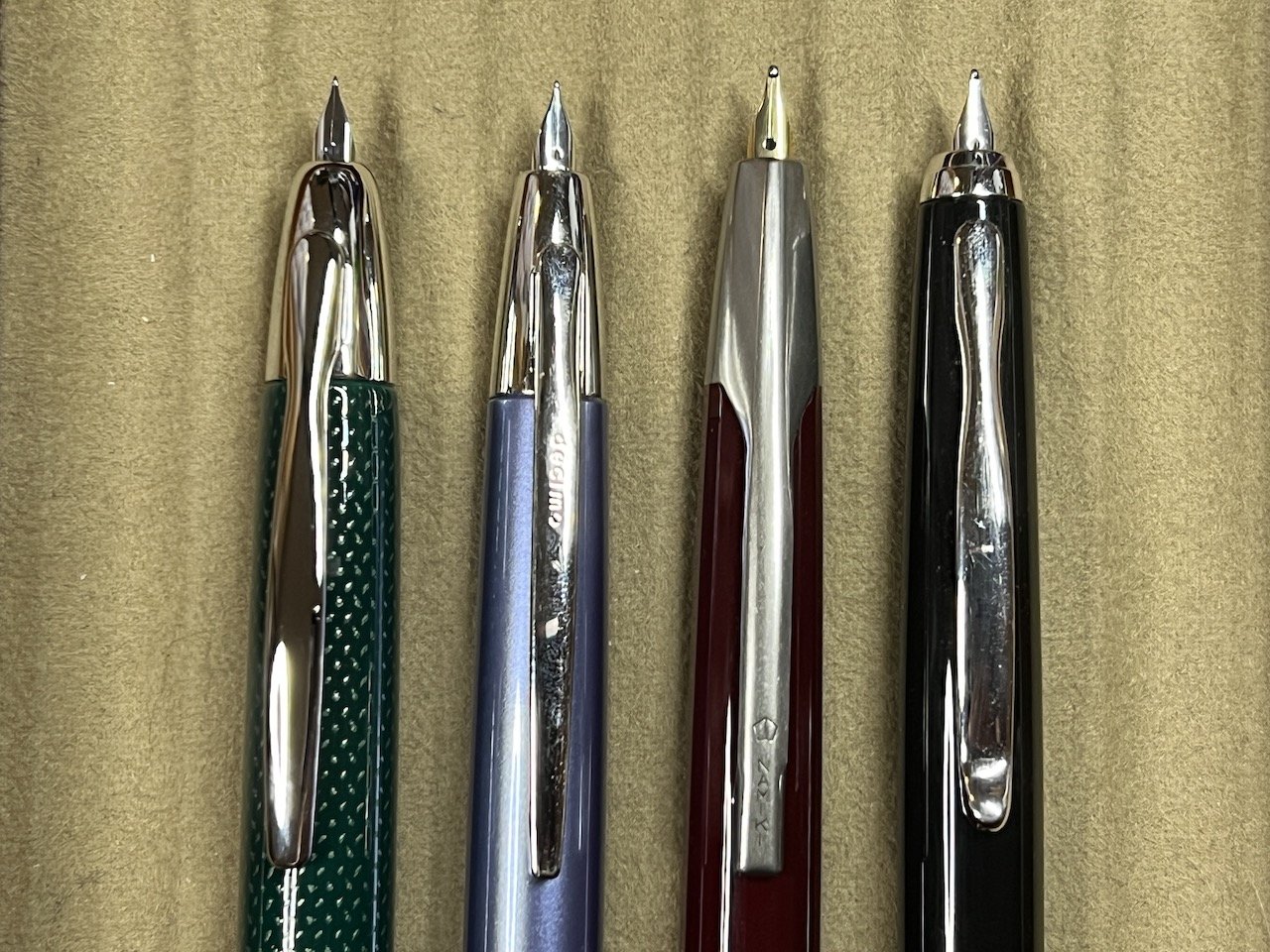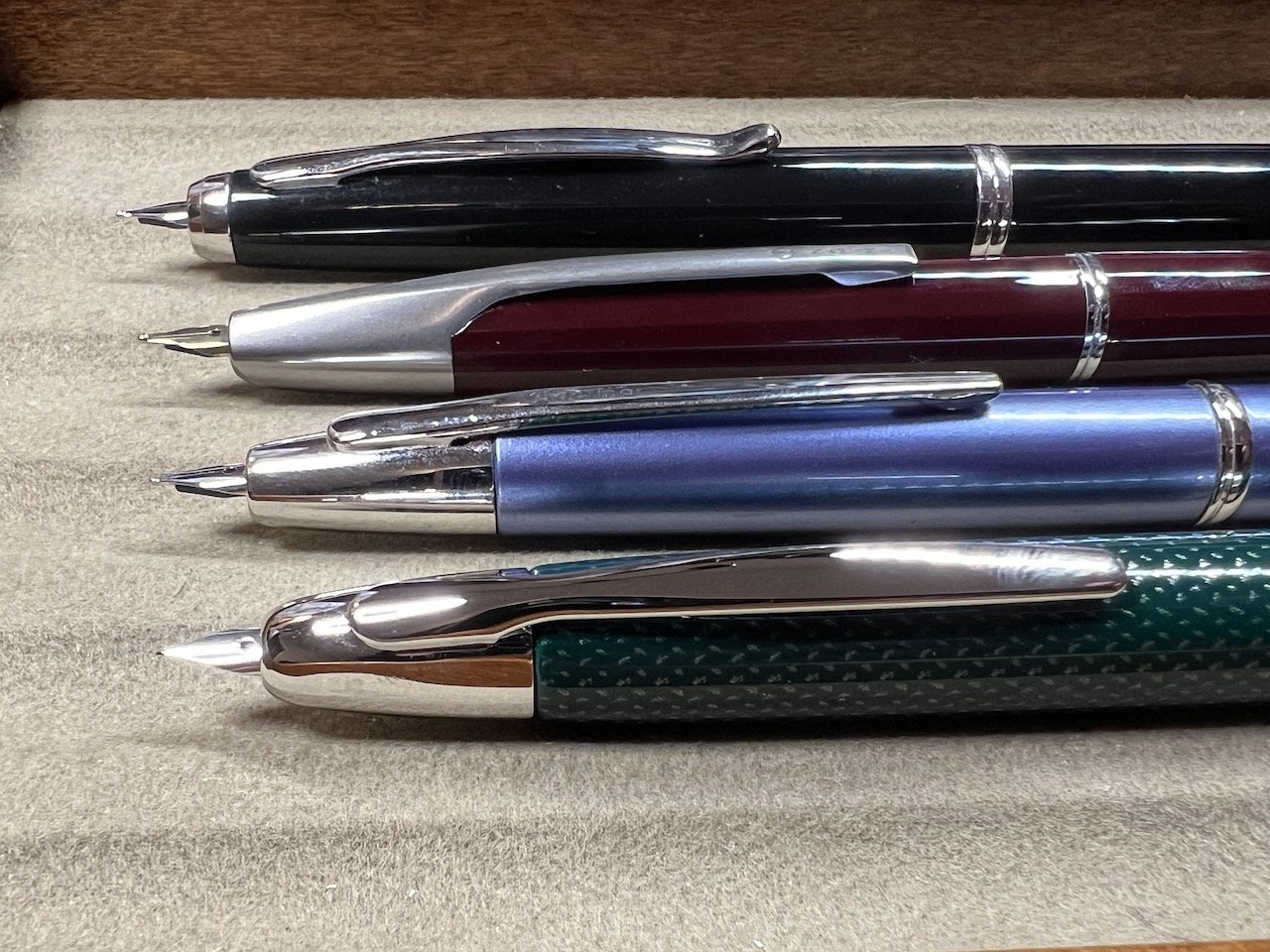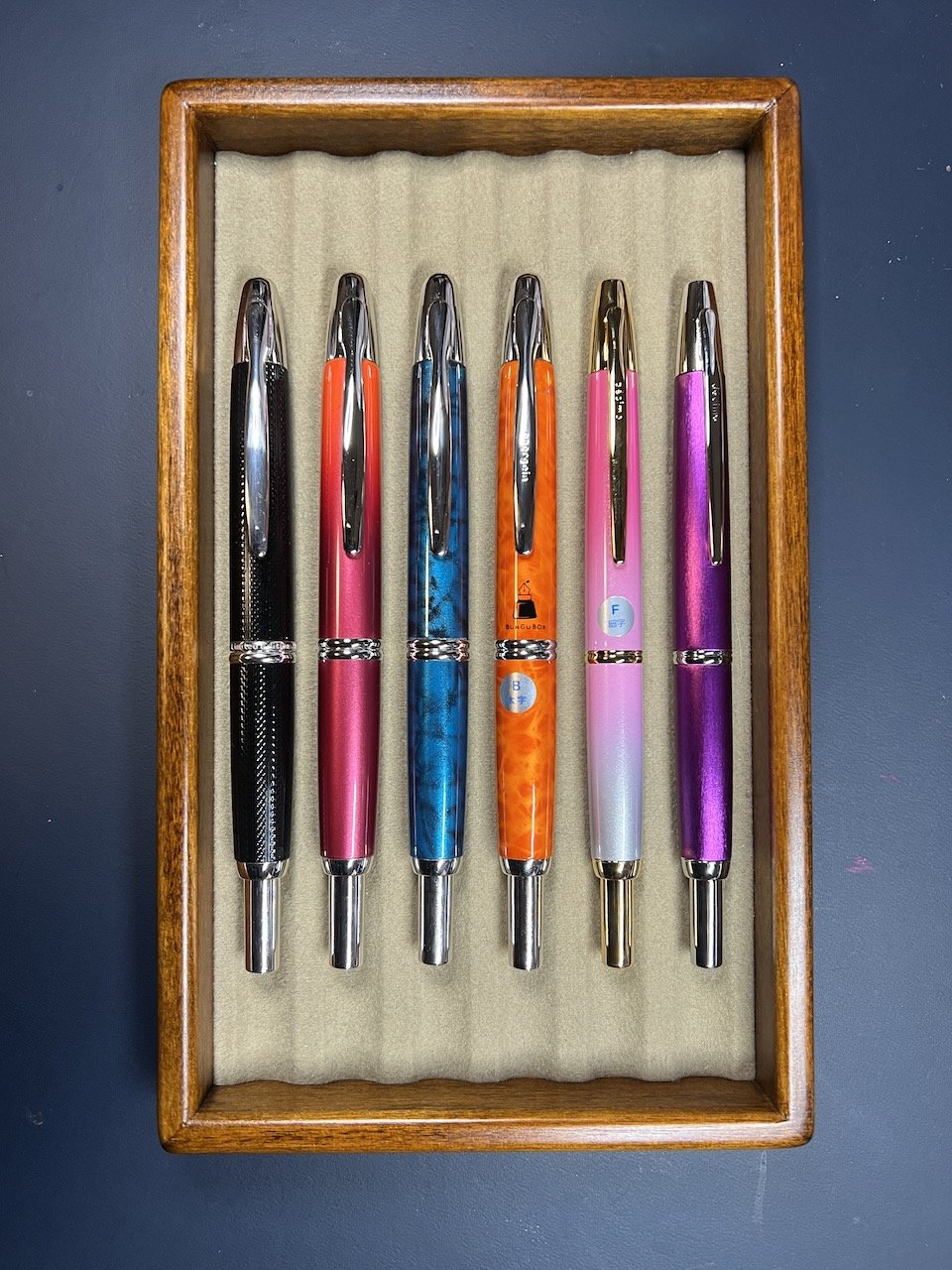I had the pleasure of testing all 15 of Pilot’s #10-sized 14K gold fountain pen nibs recently, and wanted to share my thoughts on them as a group.
For starters, I am thrilled that Pilot made these nibs available in the US market, via the Custom Heritage 912 lineup. The basics were always available here - Fine, Medium, Broad, etc. - but the specialty nibs - Coarse, Stub, Posting, and so on - were traditionally only available in the Japanese market. That changed a couple of years ago, and Pilot fans, such as myself, rejoiced.
When thinking about reviewing these, I had several thoughts. Should I do one review per nib? Should I group them in use-case batches? What about videos? Pictures? It was a lot to consider! My friend Mike Matteson at Inkdependence review this entire set a few months ago, so be sure to check out his great videos on these nibs.
For me, I decided on something different, and specific: How would I rank these nibs for my own use? Do I worry this is too specific for a broader product review? A little. In the end I think it is going to work out, as I’ll be able to discuss my specific preferences, and the pros and cons that go along with those preferences. Nibs that don’t work for me may be perfect for you, and I hope to be able to explain that throughout this list. They are all good nibs, Brad!
A few notes before we begin:
- I write in a block print style, never cursive or script. I prefer fine lines, or wide lines with an edge that benefit my writing style. Needless to say, those nibs will be near the top of my list.
- Pilot requested that I only dip test these nibs. I don’t believe that is the best way to give you the most accurate commentary on nib performance. That said, Pilot’s nibs and feeds are so good that I am able to get good results from only dipping the nib.
- All nibs are tested on Maruman Spiral Note Basic A4 Dot Grid paper, and with Pilot Iroshizuku Take-Sumi ink.
- Once I dip the nib, I wipe the bulk of the ink off on the bottle edge, then write several lines on scrap paper to even out the flow before testing the line.
- The lyrics used are from the start of ODB’s verse on “Da Mystery of Chessboxin’” by the Wu-Tang Clan.
- Wu-Tang is for the kids.
- If you have any questions if a certain nib is for you, please don’t hesitate to leave a comment, or get in touch.
- Thank you Pilot USA for loaning me these nibs!
On to my rankings:
15) Coarse
Someone has to finish last, and for me it is the Coarse. It is a marker tip, so if you are looking for that type of line, then take a look at this one. There is no line variation, just a bold, round, line. I will say that given the size and shape of nib tipping, the Coarse is a perfect platform for big and interesting nib grinds.
The Pilot Coarse Nib, perfect for big nib grinds.
14) Broad Broad
Similar to the Coarse, but with a little more ink application on the page. The Coarse nib seems to spread the ink thinner on the page, while the BB just unloads it.
Left to right: Broad, Broad Broad, Coarse.
13) Soft Medium
There is a group of nibs with no true home in the list, starting with the Soft Medium. I think it is the worst of the “Soft” group, offering less line variation than the other options. That’s what you want with a nib like this, but it is too similar to the Medium.
12) Fine Medium
Ditto here, but with a little more line variation. I will say that even with the Soft designation, the speed at which I can write is great. This is a fun one, but there are better choices for my style.
Pilot SU, left, and Music nibs.
11) Music
This traditional two slit, three tine Music nib setup is fantastic, I just prefer the Sutab (SU, aka Stub,) so much more that I knocked this one down the list a bit. It is much wider than the SU on both vertical and horizontal strokes. Think 1.5 mm vs. 1.1 mm. I prefer the narrower on both accounts.
The upturned Pilot Waverly nib.
10) Waverly
This was my first time with the Waverly nib, and I expected more from it. The idea is that it is great for writing at any angle, so if you hold the pen in a non-traditional manner, this nib could work well for you. For me, there was no benefit to it, although I wouldn’t mind spending more time with it to see what I could sort out.
9) Medium
An excellent stock writing experience. Japanese Medium nibs are the recommendation sweet spot for every day writing. I prefer finer lines, as seen below, but there is no arguing with this one.
8) Soft Fine
It’s fine, but not fine enough. This is a good example of expectations when choosing a nib. Japanese Fine nibs are very fine, and the Soft style makes lines wider due to the tines spreading further than on a standard nib. I’d rather have a standard Fine.
7) Soft Fine Medium
But the Soft Fine Medium is great! My expectation is that it would be wider, given “Medium” in the name, and it is. It is also finer than a stock Medium, and has more character on the page.
Pilot Posting nib, left, and Extra Fine.
6) Extra Fine
Why so low? It’s mostly the PO (Posting) nibs fault, but maybe more so that Pilot’s Fine nib is my favorite all day, every day writer. The Extra Fine is great, but I don’t see a place for it given my fondness of other nibs. Now, if those nibs didn’t exist, this one could top the rankings.
5) Broad
Surprise, surprise, surprise! Something happened to me when I tested this nib out, and no, it wasn’t an alien abduction. I want to be able to control my lines in wide nibs, and most nibs I’ve tested in this category have been too wide, too wet, too rounded, or all of the above. I thought I would easily prefer the Medium nib over this one, but it wasn’t that close. Again, the Medium makes for a great recommendation, but the Broad is more enjoyable.
4) Fine
My favorite pick up and write nib. Yes, the line is very narrow, but not too much. It remains legible for all types of writing, and the nib feels more stable and stronger than the Extra Fine.
3) SU
I’ve owned a Sutab nib previously, but didn’t get on with it that well. Testing this one out made me wonder if there was something wrong with mine, which I no longer own. With any stub-type nib, you want to see line variation. My old SU had very little, and I found it boring. This one has a wide range from thick to thin, and I think I’m going to need to buy a new one.
The unmistakable Pilot FA nib.
2) FA
This is the most fun Pilot nib. The flexible FA nib has more bounce than most other modern flex nib pens, while retaining a great standard writing line if you aren’t actively pushing the nib. It gives my standard block print writing a ton of character. I wouldn’t mind having this nib inked and in the rotation on a permanent basis.
1) PO
Do not buy this nib without trying it first. That’s how I acquired my Posting nib. I raved about the loaner I reviewed, a reader went out and bought one, instantly hated it, and sold it to me. 10 years on, I’m still in love. PO nib fans refer to this nib as nail-like, and that is accurate. The line is finer than the stock Extra Fine, while also being firmer due to its turned down tip. I wouldn’t be surprised if Pilot sells less of this nib than any other, but it is the one nib I own that I can’t live without.
That’s a wrap! My biggest takeaway from this experience is that Pilot makes amazing nibs. I already knew that, but it is nice to have that confirmation across the board. If you have a fountain pen writing need, Pilot as a nib for you. My thanks to Pilot North America for loaning me this set of pens for review.
Enjoy reading The Pen Addict? Then consider becoming a member to receive additional weekly content, giveaways, and discounts in The Pen Addict shop. Plus, you support me and the site directly, for which I am very grateful.
Membership starts at just $5/month, with a discounted annual option available. To find out more about membership click here and join us!

